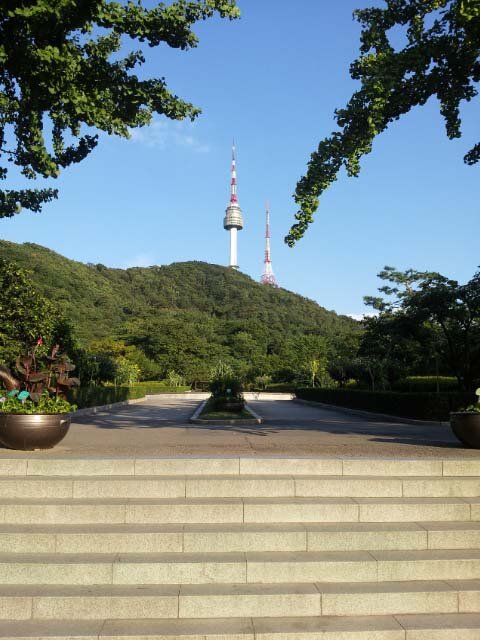Touring Shinto Shrines in Seoul
Emergence of Contestation: 2017
The "dark history" tour along a route on South Mountain in central Seoul aims to showcase the disgraceful history of Japanese colonial rule over Korea and the associated hardships by placing the remains of the Shinto Shrines located along the route in their historical context. Few of the Shrines have been re-purposed as sites of memorialisation, most remain unmarked (aside from in the tour guide materials), and reflect a disconnect in the awareness of Seoul's inhabitants between the spaces in the city they live in and their history.
The Memory and Legacy of shinto Shrine Sites in Seoul: The Geography of Colonial Religious Topoi - John G. Grisafi
Jiabiangou Labor Camp Sites
Emergence of Contestation: 2013, 2014
Jiabiangou Labor Camp (Chinese: 夹边沟; pinyin: Jiābiāngōu) is a former farm labor camp (laogai) located in Jiuquan in the northwestern desert region of Gansu Province. The camp was in use during the Anti-Rightist Campaign in the years from 1957 to 1961. During its operation, it held approximately 3,000 political prisoners, of whom about 2,500 died at Jiabianguo, mostly of starvation. Remains of the camp, including the graveyards, are unmaintained and heavily guarded to prevent people from visiting. In November 2013, a new monument erected by families and social workers was quickly destroyed by local authorities. Ai Xiaoming, a professor of Sun Yat-sen University, was briefly detained before released and prevented from photographing the site in May 2014.
Okawa Elementary School
Emergence of Contestation: 2011
In the wake of the March 2011 disasters in Tohoku, several remaining ruins have become sites of negative heritage. This site - at which the failure to manage the evacuation of pupils led to tragedy - has been subject of a debate between survivors and the Japanese government, with the former wanting to preserve the school buildings, and the latter seeking to demolish them.
Framing Negative Heritage in Disaster Risk Education: School Memorials After 3.11 - Julia Gerster, Flavia Fulco
Arahama Elementary School
Emergence of Contestation: 2011
In the wake of the March 2011 disasters in Tohoku, several remaining ruins have become sites of negative heritage. This site - an example of a successful evacuation - is being preserved as a monument to the importance of disaster preparation (BOSAI).
Framing Negative Heritage in Disaster Risk Education: School Memorials After 3.11 - Julia Gerster, Flavia Fulco






